Tiny blood vessels under the surface of the eye enlarge or become inflamed, which results in redness in the eyes.
The majority of the time, it is a response to something irritating the eye. It may be accompanied by increased eye pressure, itchiness, discharge, and irritation.
The condition can affect one or both eyes, and it may appear suddenly or gradually develop over time.
CAUSES OF RED EYES:
1. Allergens

The term ‘allergen’ refers to any substance that is typically present in the environment and has the potential to come into contact with the eye’s surface and result in an allergic reaction.
These include dust, pet dander, pollen, or specific chemicals present in contact lens solutions or makeup.
These irritants cause the body to release histamine to combat the allergens, which causes the blood vessels in the eyes to dilate and the eyes to turn red, watery, and itchy.
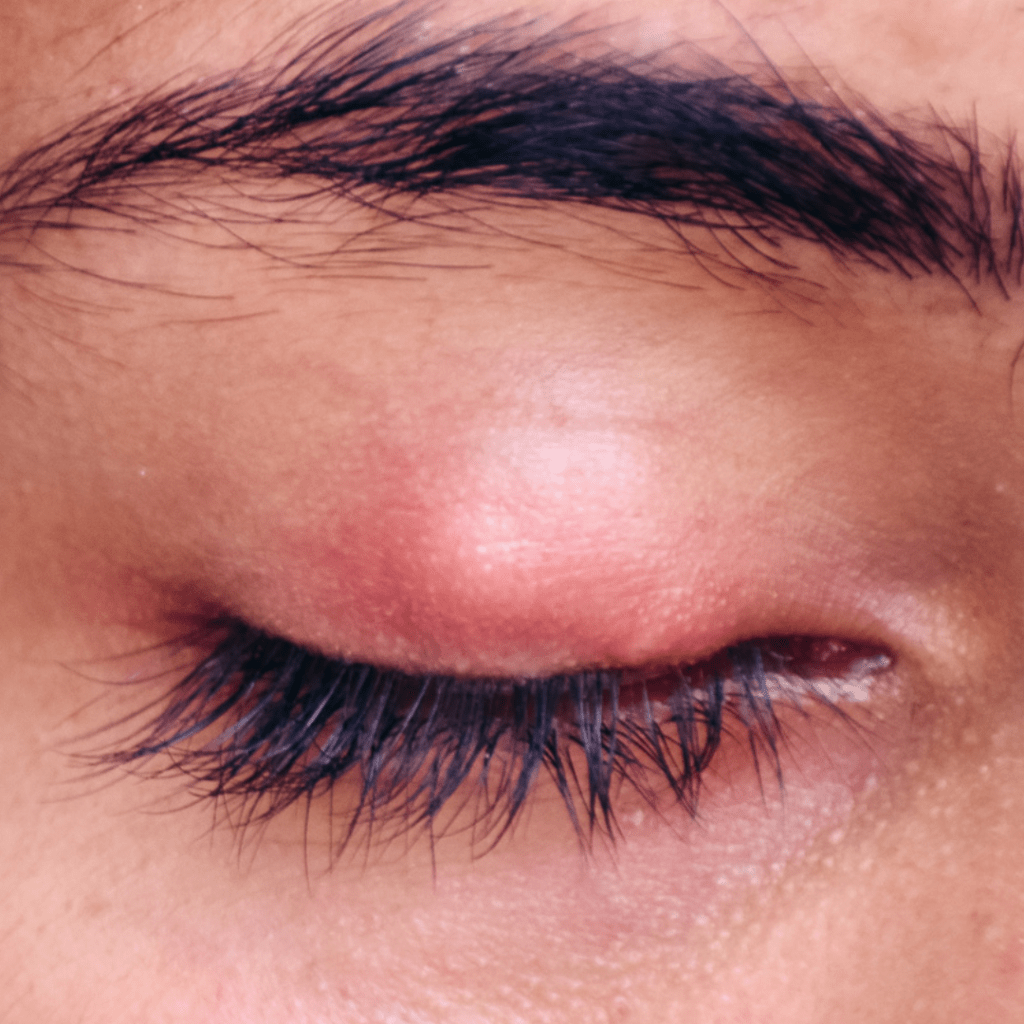
2. Inflammation of the eyelid:
Eyelid swelling and redness are symptoms of eyelid inflammation, such as blepharitis and stye. Damage to the eyelid will result in dryness, which causes redness, watering, a feeling of a foreign object, and dull pain. The eyelid is crucial to the stability of the tear film.
3. Conjunctivitis
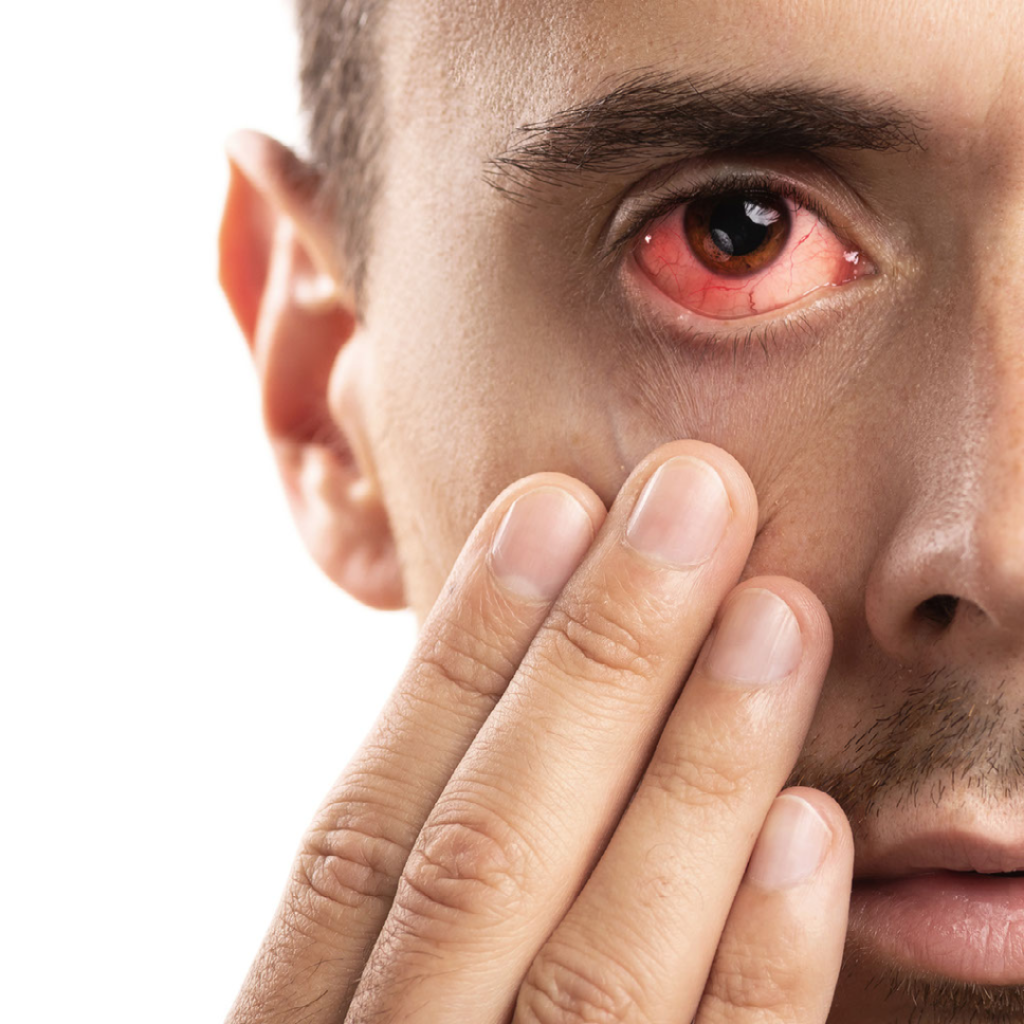
Conjunctivitis can be viral, bacterial, or allergic.
Allergic conjunctivitis is not contagious and is characterized by redness, ropy discharge, and itching.
Infections of the eyes are usually caused by viruses, which are distinguished by redness, watering discharge, and swelling of the preauricular lymph nodes.
Infections caused by bacteria can lead to thick, yellowish mucoid discharge, matted eyelids, and redness. Antibiotic eye drops can treat these symptoms.
Both viral and bacterial types of infections are contagious and spread quickly, particularly viral infections.
4. Uveitis
Uveitis is an inflammation of the uvea, the middle layer of the eye. Along with the red eye, other symptoms of this condition include blurred vision, light sensitivity, pain, and floaters
5. Scleritis:
Scleritis is a condition where the sclera, the white part of the eye, becomes inflamed. It may also affect the underlying tissue and cornea, which could impair vision. Scleritis patients are frequently diagnosed with rheumatoid arthritis or other autoimmune diseases.
5. Dry Eyes
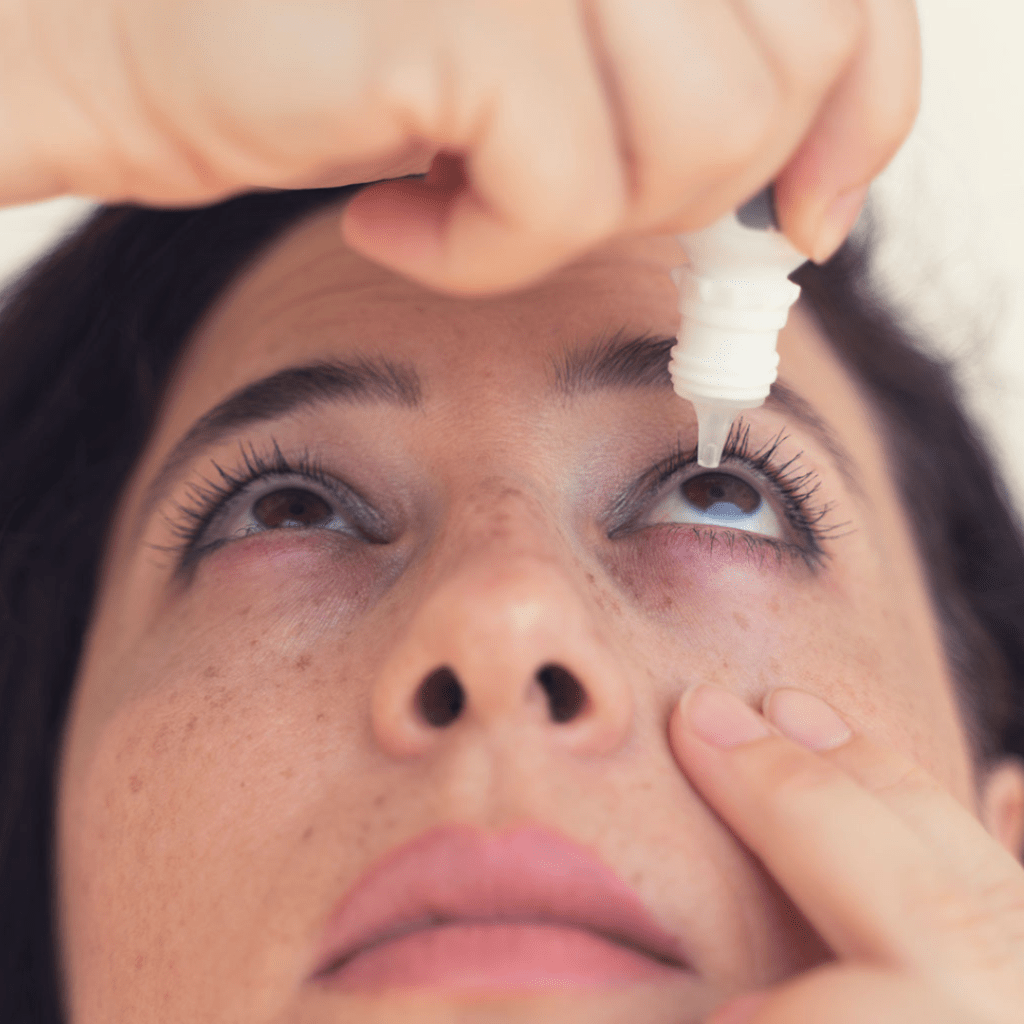
Our eyes need tears to lubricate, shield, and cleanse them; as a result, when they don’t function properly, our eyes are more vulnerable to infections.
Foreign body sensations inside the eye, burning, increased blinking, watering (a reflex action), eye fatigue, and redness are common signs of dry eyes.
Over-the-counter lubricating drops can ease early-stage dry eyes, but a visit to an ophthalmologist is necessary for moderate-to-severe cases.
6. EYESTRAIN

Dehydration, inflammation of the eyelids, and excessive use of screens can all make dryness worse.
The most prevalent form of eyestrain brought on by the extended use of digital devices is computer vision syndrome.
7. Contact lenses
A dry eye can also result from wearing contacts for an extended period. Allergy, improper contact lens care, and dry eye problems can all contribute to redness.
8. Eye injury:
From minor corneal abrasions or scratches to chemical burns, lacerations, and eyeball rupture, eye injuries can occur to anyone and cause redness among other signs and symptoms.
9. Bloodshot eyes:
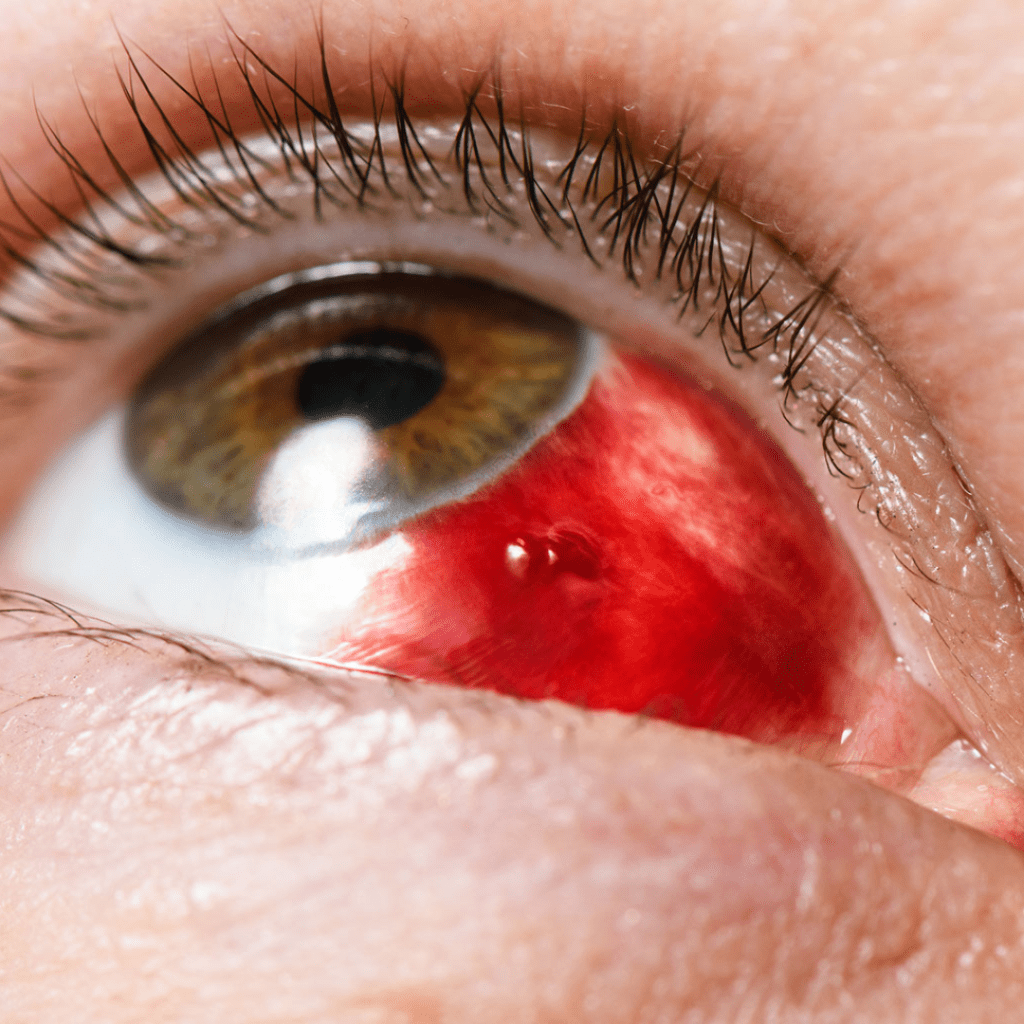
Bloodshot eyes or bleeding beneath the conjunctiva is known as subconjunctival hemorrhage. Trauma, high blood pressure, a ferocious cough, or straining are some potential causes.
This usually doesn’t require any treatment and the redness comes down in a couple of weeks.
10. Corneal Ulcer
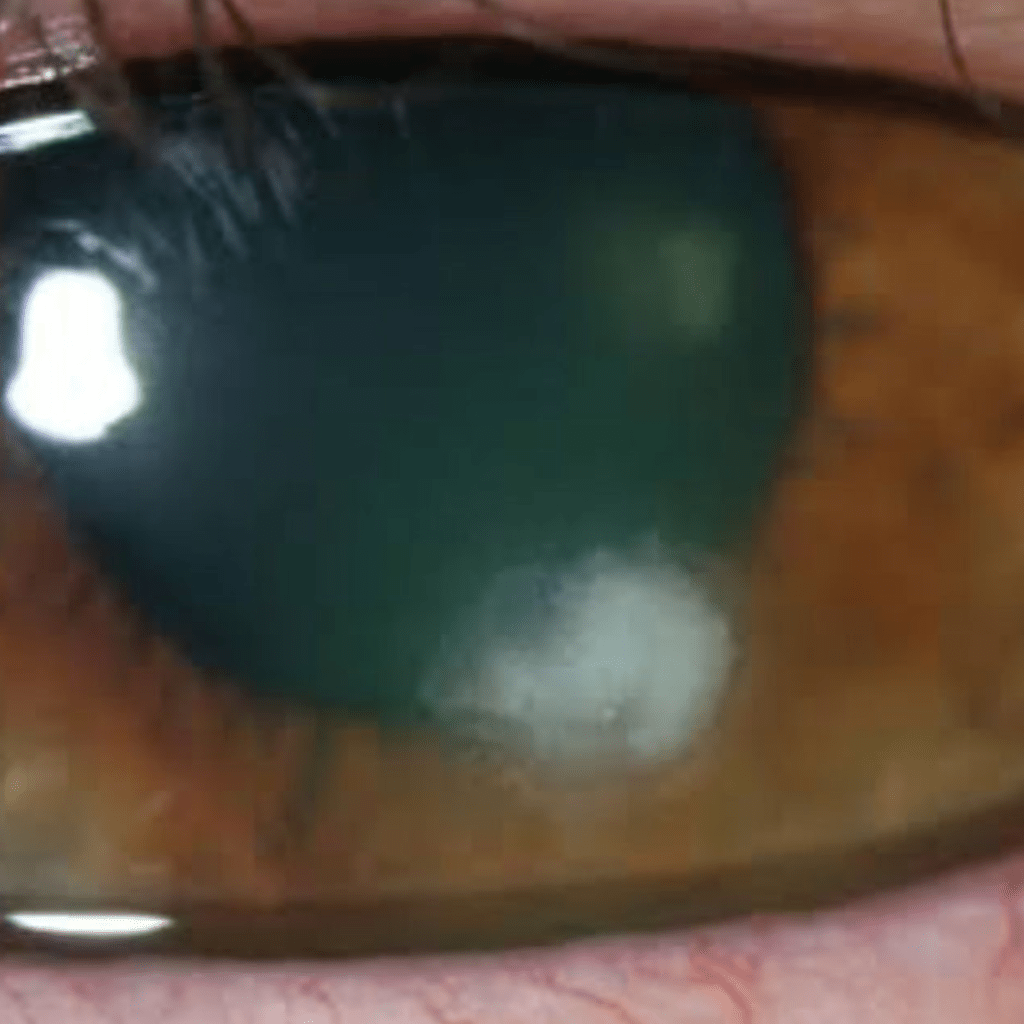
The outer layer of the eye is known as the cornea, which can develop sores or ulcers called corneal ulcers. The cornea can become infected by bacteria, fungi, or viruses and develop a corneal ulcer.
Dry eyes, corneal injury, excessive contact lens wear, and infections linked to contact lenses are some additional causes.
In addition to redness, symptoms of a corneal ulcer include intense eye pain, gritty feeling, increased tearing, pus discharge, blurry vision, sensitivity to light, and swelling of the eyelids.
The infections can be sight-threatening, so it is critical to seek medical attention immediately.
11. Glaucoma:
Glaucoma is a group of different eye conditions where the optic nerve and field of vision are affected by high eye pressure.
Acute angle closure glaucoma is one type that results in a red eye that is extremely painful. This condition can lead to permanent vision loss and is an ophthalmic emergency.
HOME REMEDIES TO PREVENT OR TREAT RED EYE:
1. WARM COMPRESS
You can reduce redness and irritation by soaking a towel in warm water and applying it to the eyelids. Styes or chalazion cases will improve after a week or two of warm compresses for at least 10 minutes, four times per day.
To prevent dry eyes and maintain a healthy tear film, perform this once per day for 10 minutes.
2. Cold Compress
Cold temperatures cause blood vessels to constrict, which reduces the release of inflammatory mediators that cause itching and redness in blood vessels. Cucumber slices, frozen spoons, or frozen green tea bags can be used as cold compresses on closed eyes.
3. Lubricating eyedrops:
These can be bought over the counter and are great to soothe tired eyes which also helps in reducing redness. Other than lubricating eyedrops, avoid using other drops as self-medication.
4. Prevent digital eye strain:
Use the 20-20-20 rule, blink consciously, and use lubricating eye drops to prevent digital eye strain. The 20-20-20 rule recommends looking at something 20 feet away for 20 seconds after every 20 minutes of computer use.
5. Eat foods rich in Omega-3 fatty acid
Omega 3 is a powerful antioxidant and is protective against dryness and inflammation inside the eye.
6. hydration:
Drink enough water throughout the day to stay hydrated since dehydration can cause eye strain, making the eyes red.
7. AVOID allergens and pollution
A person who suffers from red eyes from irritants and allergens should avoid going to places that are polluted or allergen-rich.
8. Avoid wearing contact lenses:
If the eyes are red, using eyeglasses instead of contacts for a while can help to reduce red eyes. It is crucial to maintain proper hygienic conditions while handling contact lenses.
9. Avoid wearing eye makeup:
If you have red eyes or inflamed eyelids, try to avoid wearing makeup.
It is important to keep in mind that eye makeup, such as eyeliner and mascara, should only be applied at the base of the eyelashes and not over the oil gland openings that are visible behind the eyelashes.
10. Sleep soundly:
For the eyes to relax, a good night’s sleep is necessary. Lack of adequate sleep can cause eye itching and redness; in more severe cases, it can cause eye inflammation.
QUICK SUMMARY:
An over-the-counter artificial tear will usually soothe red eyes. If you experience additional symptoms such as eye pain, light sensitivity, swelling of the eyelids, or blurry vision, or if redness persists for more than a week or gets worse, schedule an appointment with an eye doctor right away to receive treatment.
